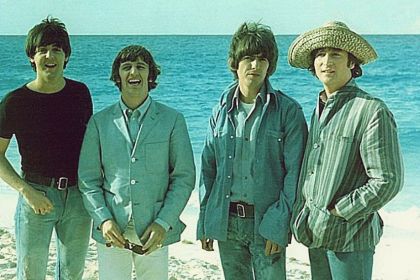Music Theory
Things We Said Today: the only Beatles song featuring Phrygian mode

Things We Said Today is one of the tracks written by Paul McCartney for The Beatles's 1964 A Hard Day's Night, although it was credited to Lennon–McCartney under an agreement between the two partners to share their song credits regardless of who was the main author.
Of all the songs the band wrote for their thirteen studio albums, Things We Said Today shows the only example of the Phrygian mode—the modal diatonic mode common in flamenco music and detailed in this article. At the same time, The Beatles heavily used the other diatonic scales and composed about eighty songs in Ionian, Aeolian, Dorian, and Mixolydian modes.
In the harmonic analysis of the verses chord chains, the scale degrees (denoted with Roman numerals) show the following progressions composed in both Aeolian and Phrygian modes:
- Am–Em7–Am or i–v7–i for lines 1, 2, 4
- C–F–B♭ or III–VI–II for line 3
Verses are mostly accompanied by a looped sequence of just two chords, specifically the Am–Em7, featuring the Aeolian mode and forming the so-called authentic cadence. The Phrygian mode is especially prominent in the third line with the C–F–B♭ progression that unites all three Phrygian major triads, including the supertonic chord of the second scale degree, which is the highlight of the Phrygian minor mode and is often referred to as the Neapolitan chord. There is evidence that McCartney was particularly pleased with the transition from the F major chord to the B♭ Neapolitan chord accompanying the lyrics "wishing you weren't so far away".
Listen to Things We Said Today by The Beatles:
In the choruses, the harmony is switched to the key of A major (Ionian mode):
- A–D7–B7→E7 or I–IV7–V/V→V7
- A–D7–B7–B♭7 or I–IV7–II–♭II7
Marked in red, the B7 sevens chord does not belong to the Ionian major mode and acts as a secondary chord that shifts the tonal center and introduces the new temporary tonic chord E7. This technique is known as tonicization and is quite common in classical music. The choruses end with the B♭7 Neapolitan seventh chord, and although its appearance here is not an obvious decision, it works well as a verse precursor.
Another cool feature concerns the transition to the key of A major. Here the A major tonic chord appears right at the end of each verse followed by a chorus. This classic technique, known as the Picardy third, is explored in more detail in this article.



